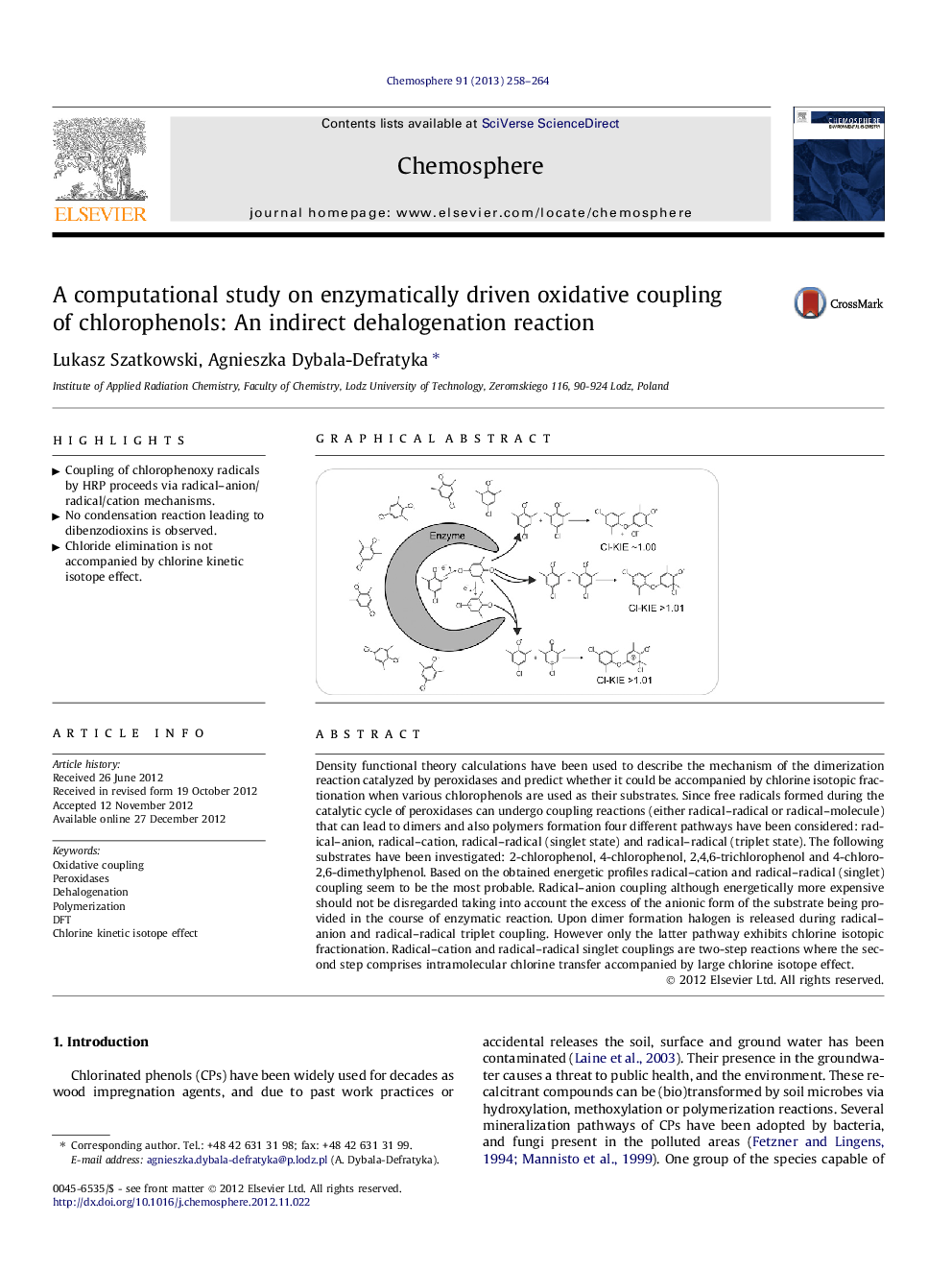| کد مقاله | کد نشریه | سال انتشار | مقاله انگلیسی | نسخه تمام متن |
|---|---|---|---|---|
| 4409494 | 1307487 | 2013 | 7 صفحه PDF | دانلود رایگان |

Density functional theory calculations have been used to describe the mechanism of the dimerization reaction catalyzed by peroxidases and predict whether it could be accompanied by chlorine isotopic fractionation when various chlorophenols are used as their substrates. Since free radicals formed during the catalytic cycle of peroxidases can undergo coupling reactions (either radical–radical or radical–molecule) that can lead to dimers and also polymers formation four different pathways have been considered: radical–anion, radical–cation, radical–radical (singlet state) and radical–radical (triplet state). The following substrates have been investigated: 2-chlorophenol, 4-chlorophenol, 2,4,6-trichlorophenol and 4-chloro-2,6-dimethylphenol. Based on the obtained energetic profiles radical–cation and radical–radical (singlet) coupling seem to be the most probable. Radical–anion coupling although energetically more expensive should not be disregarded taking into account the excess of the anionic form of the substrate being provided in the course of enzymatic reaction. Upon dimer formation halogen is released during radical–anion and radical–radical triplet coupling. However only the latter pathway exhibits chlorine isotopic fractionation. Radical–cation and radical–radical singlet couplings are two-step reactions where the second step comprises intramolecular chlorine transfer accompanied by large chlorine isotope effect.
Figure optionsDownload as PowerPoint slideHighlights
► Coupling of chlorophenoxy radicals by HRP proceeds via radical–anion/radical/cation mechanisms.
► No condensation reaction leading to dibenzodioxins is observed.
► Chloride elimination is not accompanied by chlorine kinetic isotope effect.
Journal: Chemosphere - Volume 91, Issue 3, April 2013, Pages 258–264